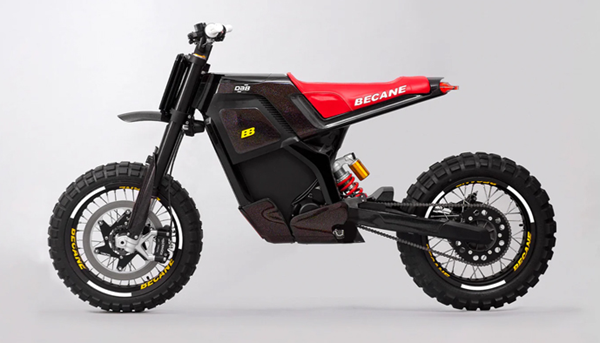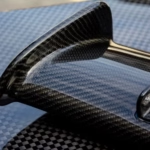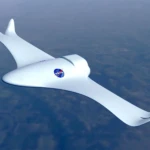The Revolutionary Impact of 3D Printing on the Motorcycle Industry
The motorcycle industry has witnessed a significant transformation in recent years, thanks to the advent of 3D printing technology. This innovative manufacturing process has enabled motorcycle manufacturers to produce complex components with increased precision, reduced weight, and improved performance. In this blog post, we will delve into the world of 3D printing in the motorcycle industry, exploring its applications, benefits, and the companies that are leveraging this technology to create cutting-edge motorcycles.
Introduction to 3D Printing in the Motorcycle Industry
3D printing, also known as additive manufacturing, is a process that creates three-dimensional solid objects from digital files. This technology has been around for several decades, but its application in the motorcycle industry is a relatively recent phenomenon. The use of 3D printing in motorcycle manufacturing has opened up new possibilities for design, production, and customization. With 3D printing, motorcycle manufacturers can create complex components with intricate geometries, reduced material waste, and increased precision.
Applications of 3D Printing in the Motorcycle Industry
3D printing has a wide range of applications in the motorcycle industry, including:
- Prototyping: 3D printing enables motorcycle manufacturers to create prototypes quickly and cost-effectively, allowing for rapid testing and iteration.
- Production: 3D printing can be used to produce end-use components, such as engine parts, chassis components, and bodywork.
- Customization: 3D printing enables motorcycle manufacturers to offer customized components, such as personalized handlebars, seats, and fairings.
- Repair and maintenance: 3D printing can be used to produce spare parts, reducing lead times and costs associated with traditional manufacturing methods.
Benefits of 3D Printing in the Motorcycle Industry
The benefits of 3D printing in the motorcycle industry are numerous, including:
- Weight reduction: 3D printed components can be designed to be lighter and stronger, improving the overall performance and efficiency of the motorcycle.
- Increased complexity: 3D printing enables the creation of complex geometries and structures that cannot be produced using traditional manufacturing methods.
- Reduced material waste: 3D printing is an additive process, which means that material is added layer by layer, reducing waste and minimizing the environmental impact of production.
- Improved performance: 3D printed components can be designed to optimize performance, such as improved aerodynamics, reduced vibration, and increased strength.
Companies Leveraging 3D Printing in the Motorcycle Industry
Several companies are leveraging 3D printing technology to create innovative motorcycles, including:
- Dab Motors: Dab Motors has collaborated with Becane to develop an electric motorcycle that features 3D printed parts, such as the front mudguard and logo.
- Idastria: Idastria is an expert in 3D printing services and has worked with the Speedup-Boscoscuro Moto2 team to produce 3D printed parts, such as airbox accessories and aerodynamic deflectors.
- Viba: Viba is a French design studio that specializes in the manufacture of personalized motorcycles, using 3D printing to produce complex components, such as the bodywork and handlebars.
- CRP Technology: CRP Technology has worked with Energica Motor Company to produce 3D printed seats for their electric motorcycle, using advanced SLS composite printing technology.
- Born Motor Co.: Born Motor Co. is a specialist in the production of high-end deconstruction motorcycles and has integrated 3D printing into their manufacturing process, using BCN3D SIGMA 3D printers to produce final parts.
- Mr. Martini: Mr. Martini is an Italian customizer who uses 3D printing to create personalized motorcycle components, such as bodywork and seats.
- Apworks: Apworks is a subsidiary of the Airbus group and has designed the first 3D printed motorcycle, called the Light Rider, which features a lightweight frame and advanced materials.
- Bigrep: Bigrep is a manufacturer of industrial 3D printers and has designed a 3D printed electric bike, called the Nera, which features a black color scheme and advanced materials.
- E-Racer: E-Racer has collaborated with Wasp to produce a 3D printed electric motorcycle, which features a rugged design and advanced materials.
- Vagabund Moto: Vagabund Moto is an Austrian company that specializes in the personalization of motorcycles, using 3D printing to create customized components, such as fuel tanks and fairings.
Conclusion
The application of 3D printing technology in the motorcycle industry has revolutionized the way motorcycles are designed, produced, and customized. With its ability to create complex components with increased precision, reduced weight, and improved performance, 3D printing has opened up new possibilities for motorcycle manufacturers. As the technology continues to evolve, we can expect to see more innovative applications of 3D printing in the motorcycle industry, enabling the creation of faster, lighter, and more efficient motorcycles.
Future of 3D Printing in the Motorcycle Industry
The future of 3D printing in the motorcycle industry is exciting, with several trends and innovations expected to emerge in the coming years, including:
- Increased use of advanced materials: The use of advanced materials, such as carbon fiber and titanium, is expected to increase, enabling the creation of lighter and stronger components.
- Improved printing technologies: Advances in printing technologies, such as increased resolution and speed, are expected to improve the accuracy and efficiency of 3D printing.
- Greater adoption of 3D printing: As the technology becomes more accessible and cost-effective, we can expect to see greater adoption of 3D printing in the motorcycle industry, enabling more manufacturers to leverage its benefits.
- New business models: The use of 3D printing is expected to enable new business models, such as pay-per-part and product-as-a-service, which will change the way motorcycle manufacturers operate and interact with their customers.
In conclusion, the application of 3D printing technology in the motorcycle industry has the potential to revolutionize the way motorcycles are designed, produced, and customized. As the technology continues to evolve, we can expect to see more innovative applications of 3D printing in the motorcycle industry, enabling the creation of faster, lighter, and more efficient motorcycles.

















